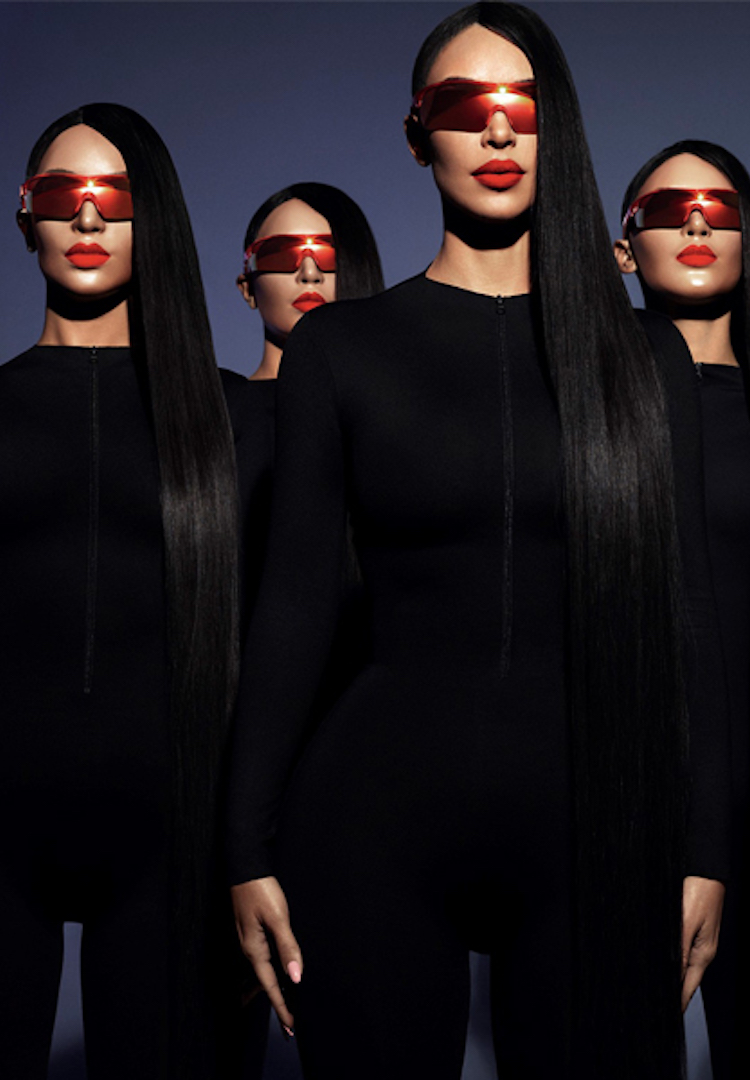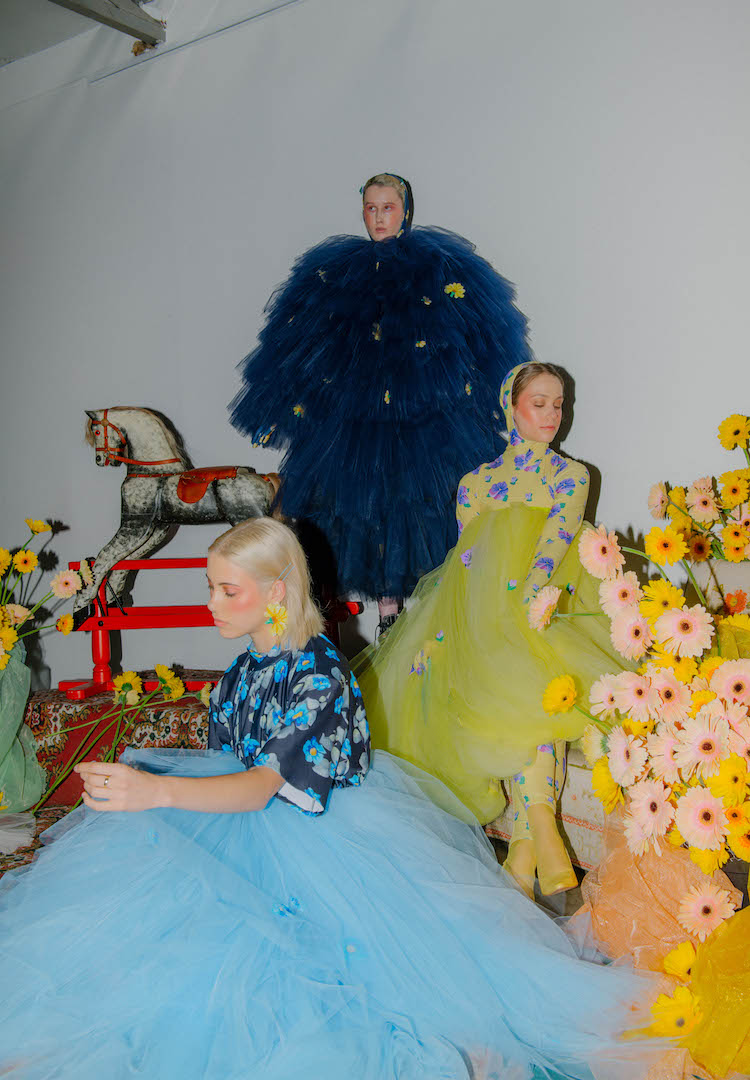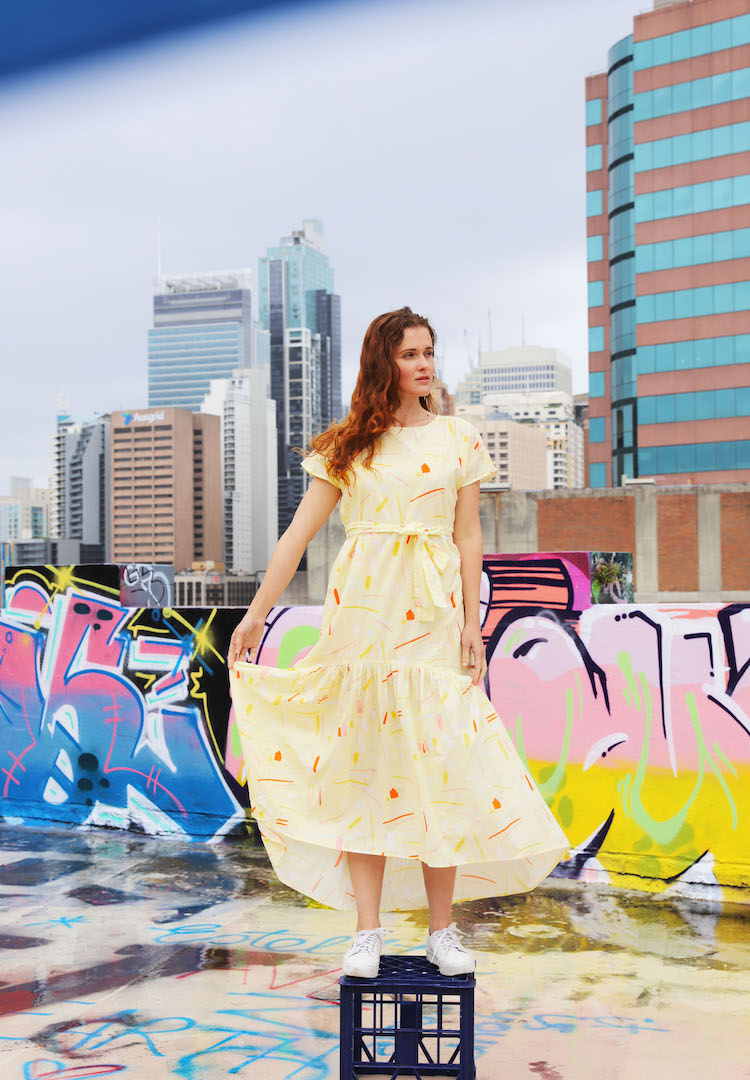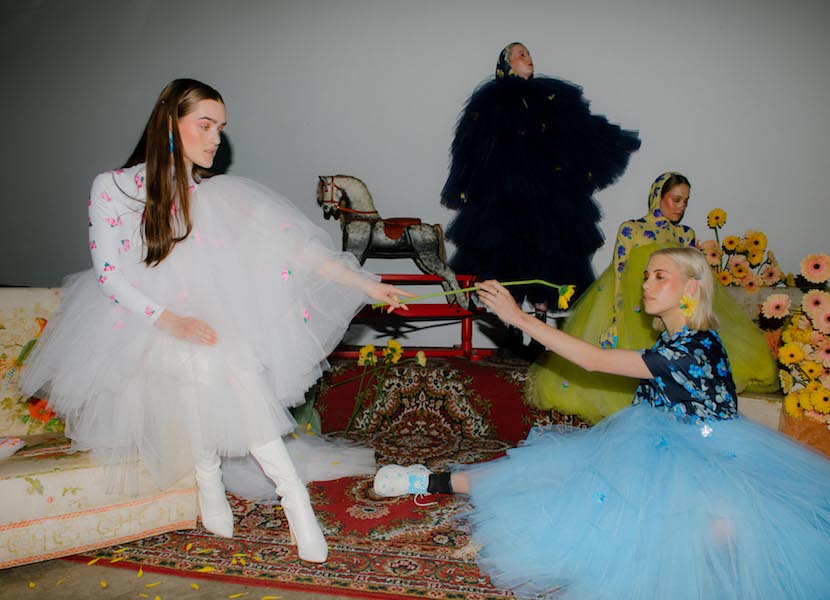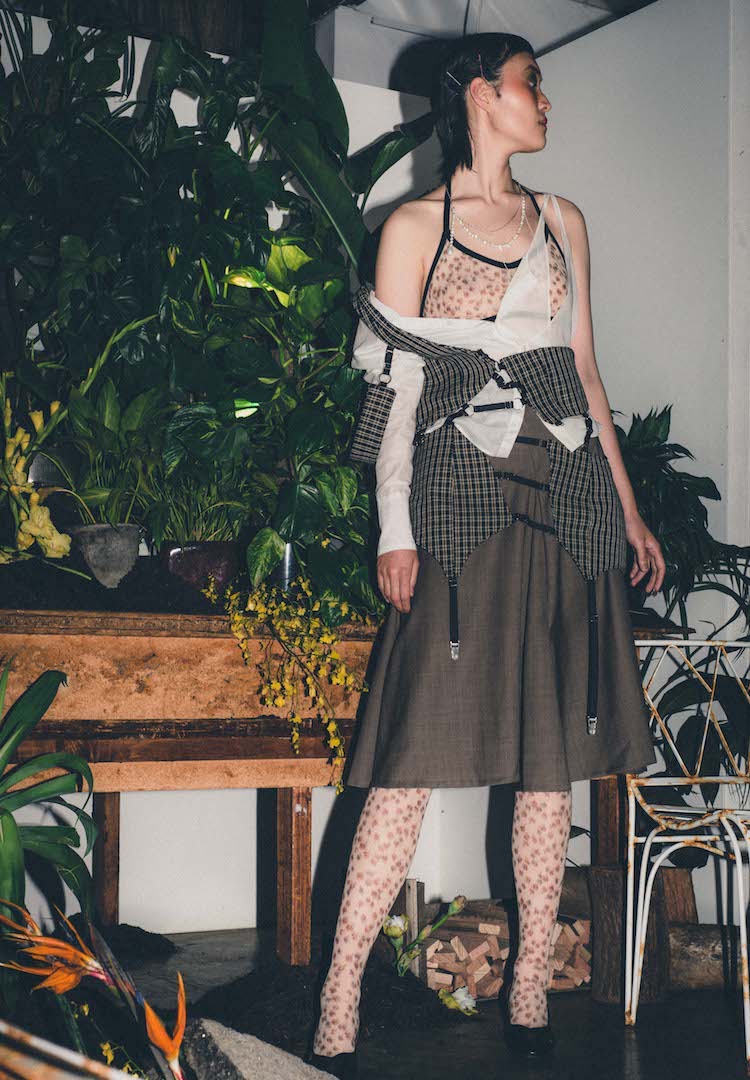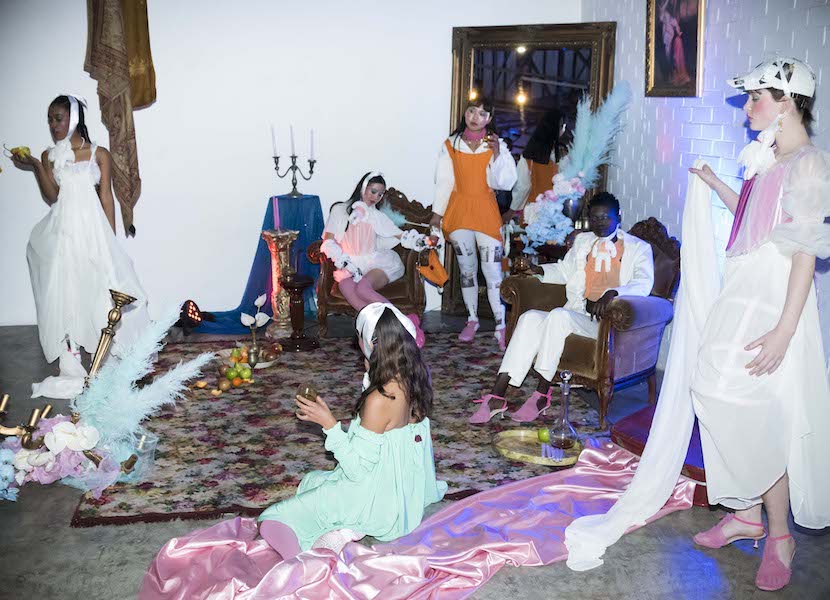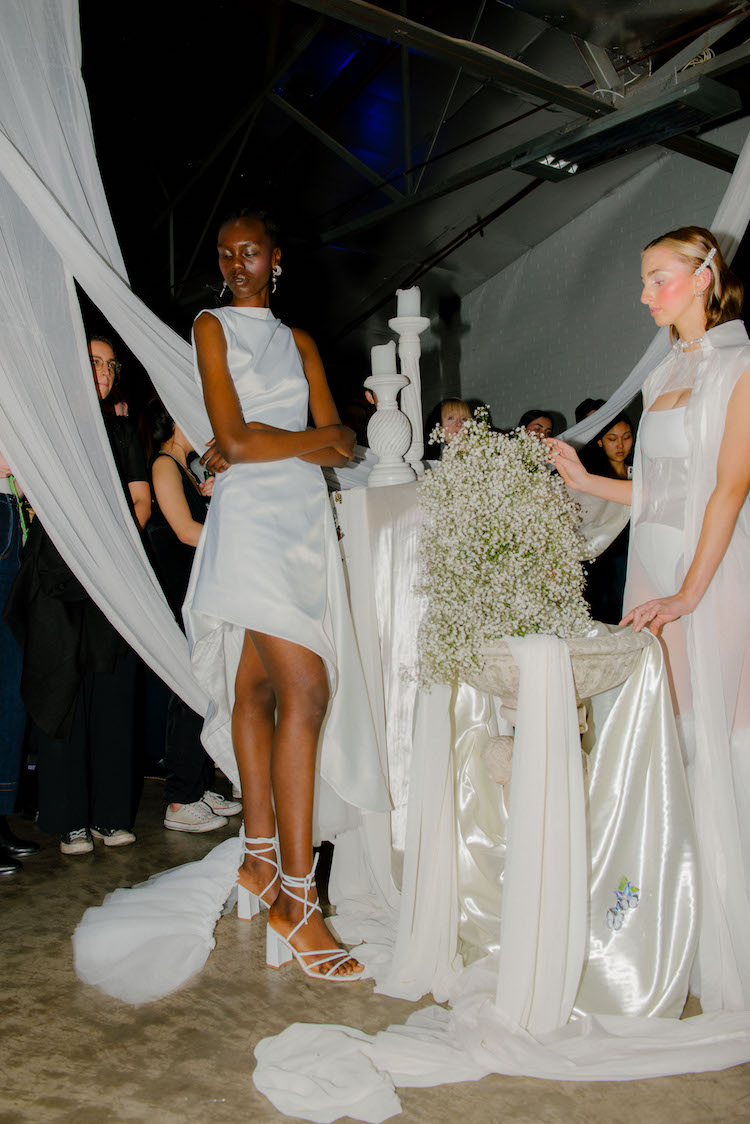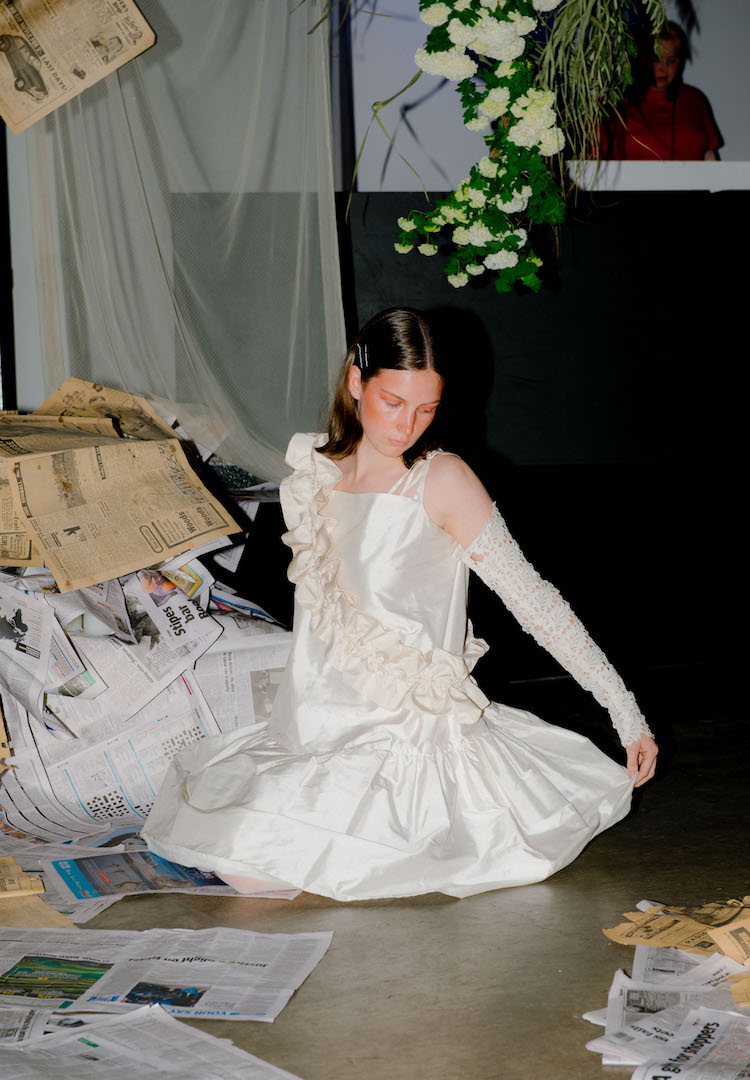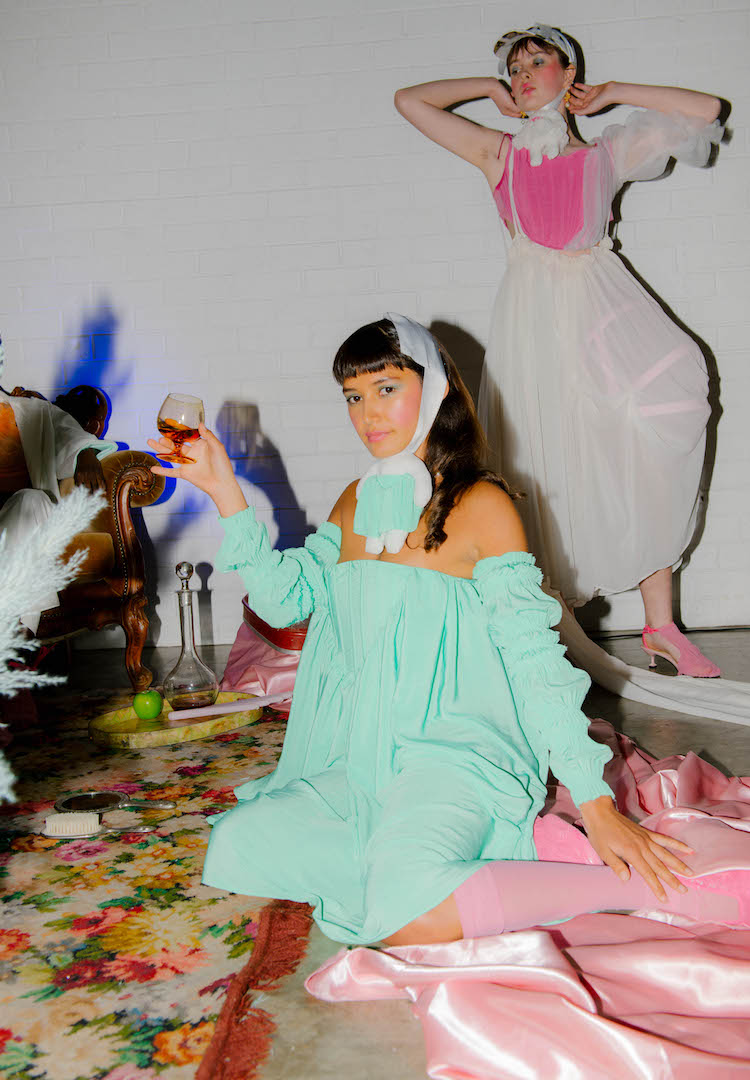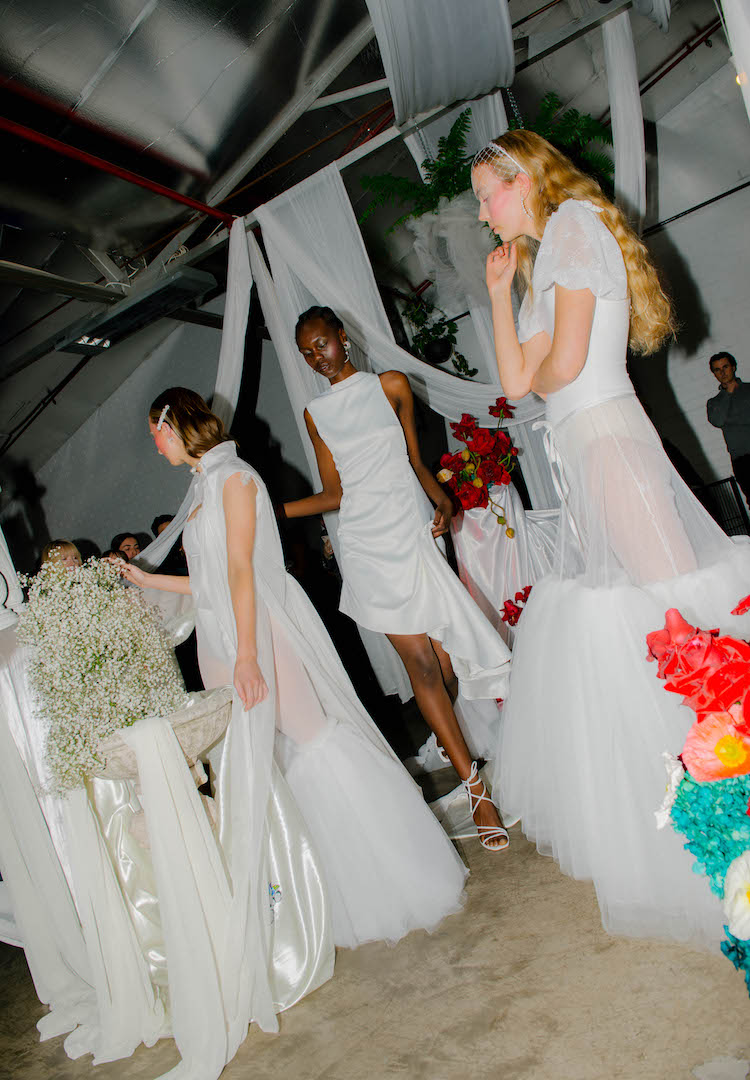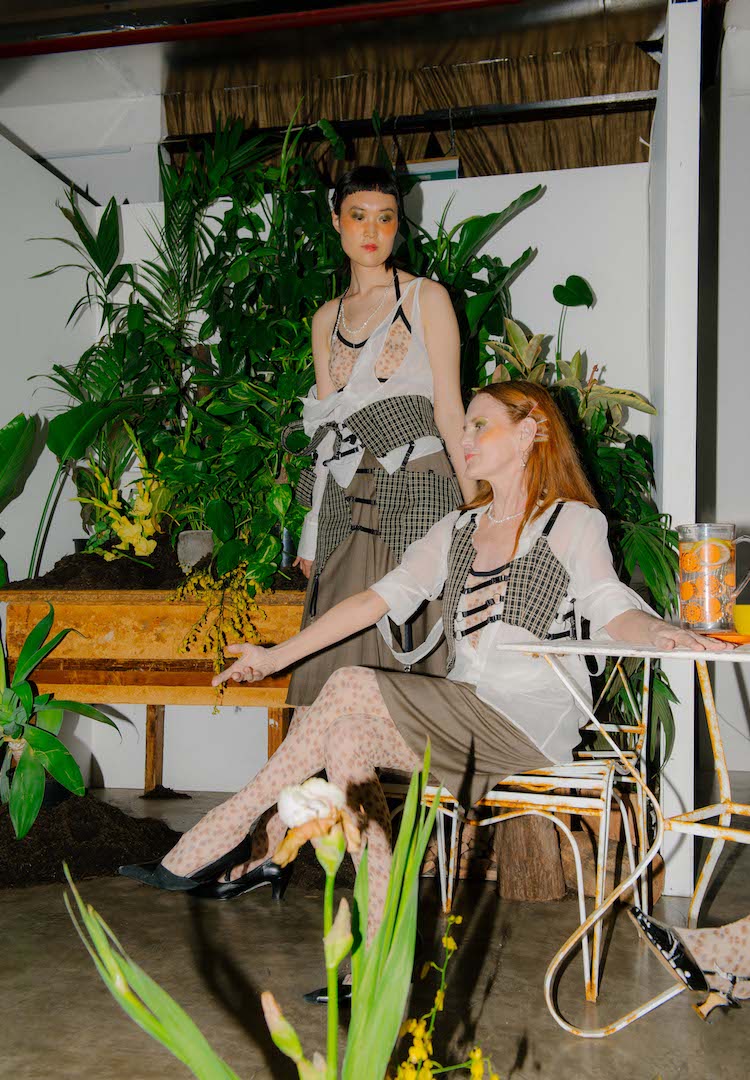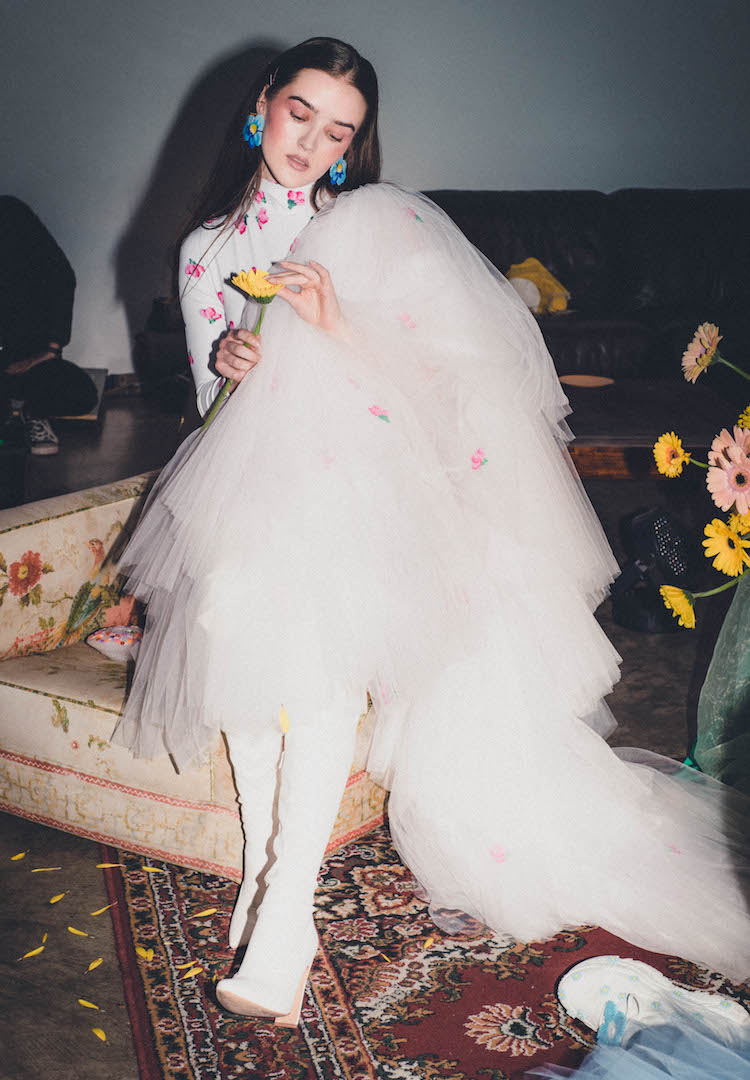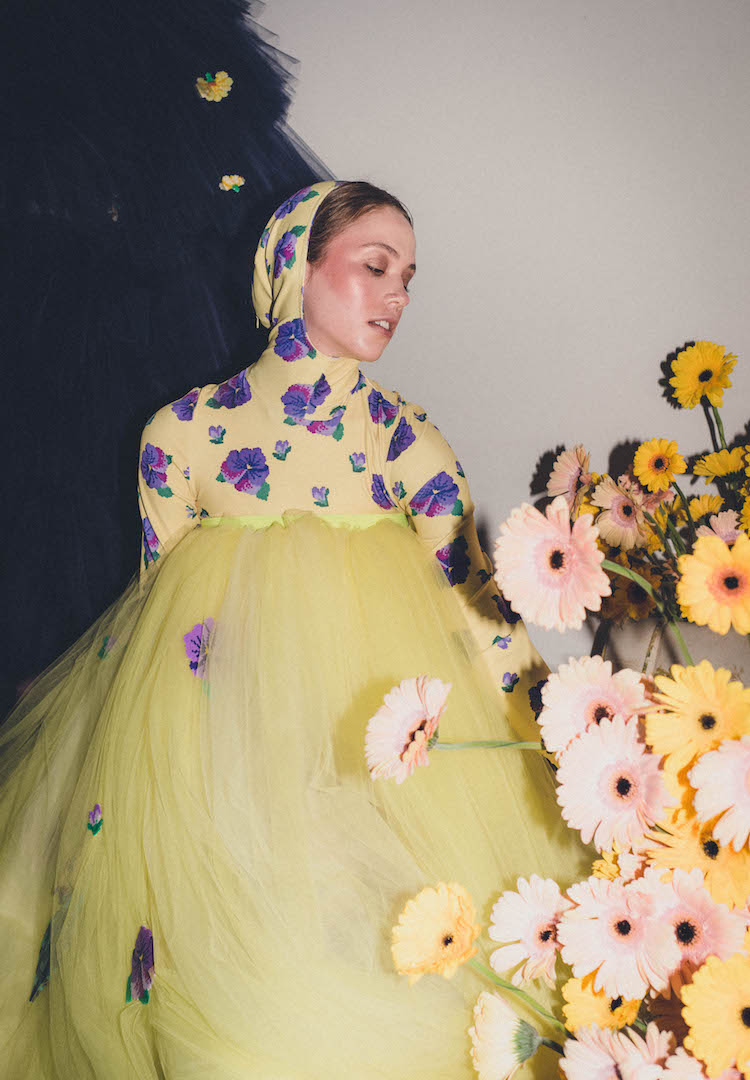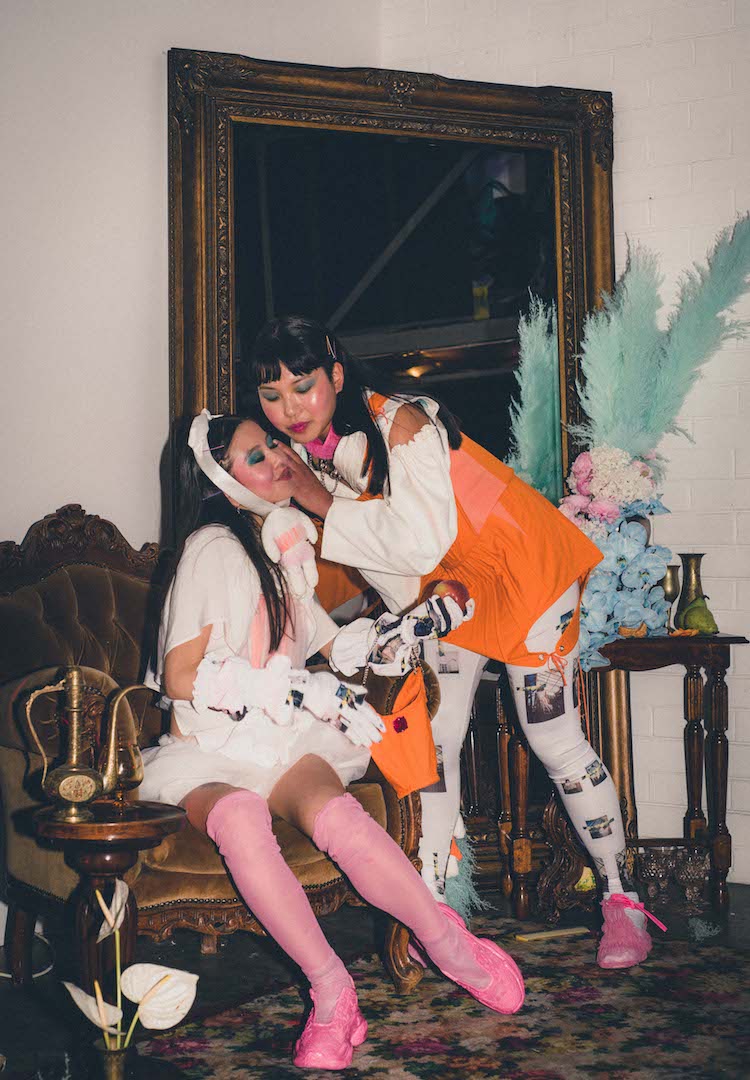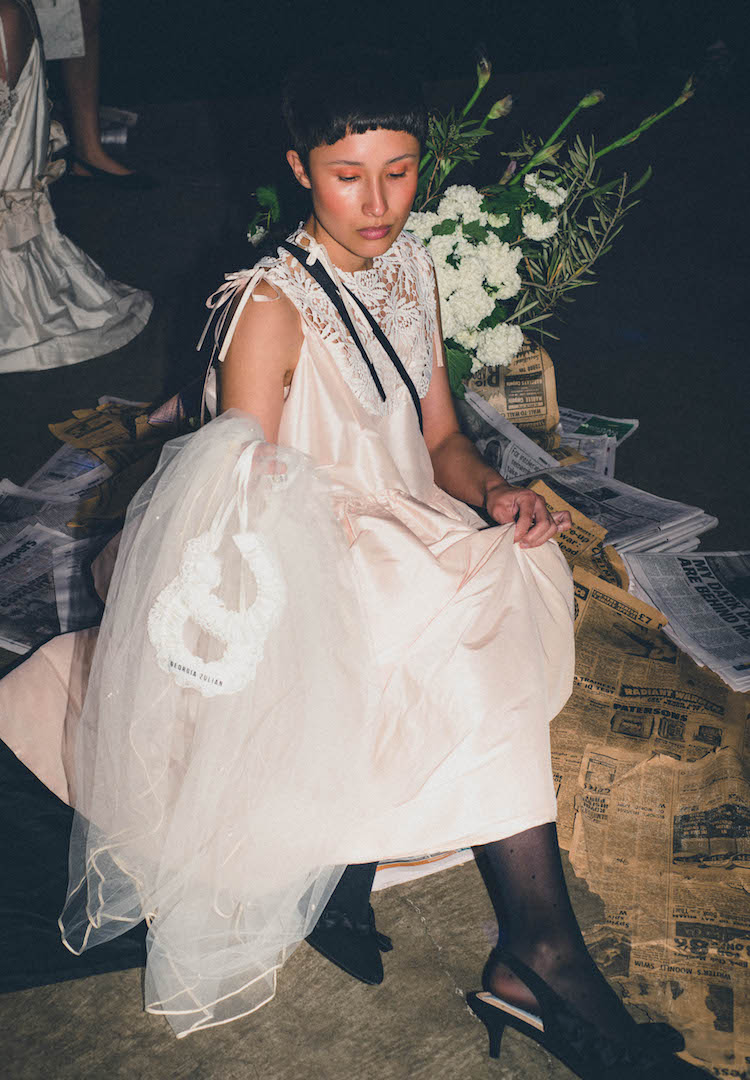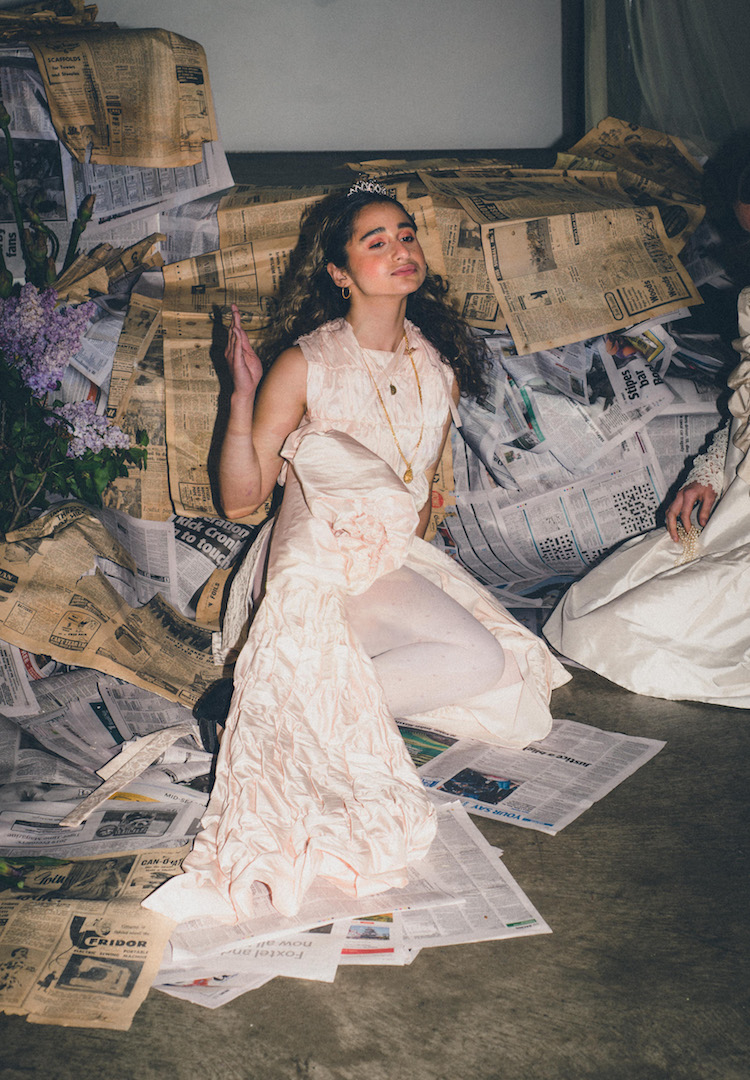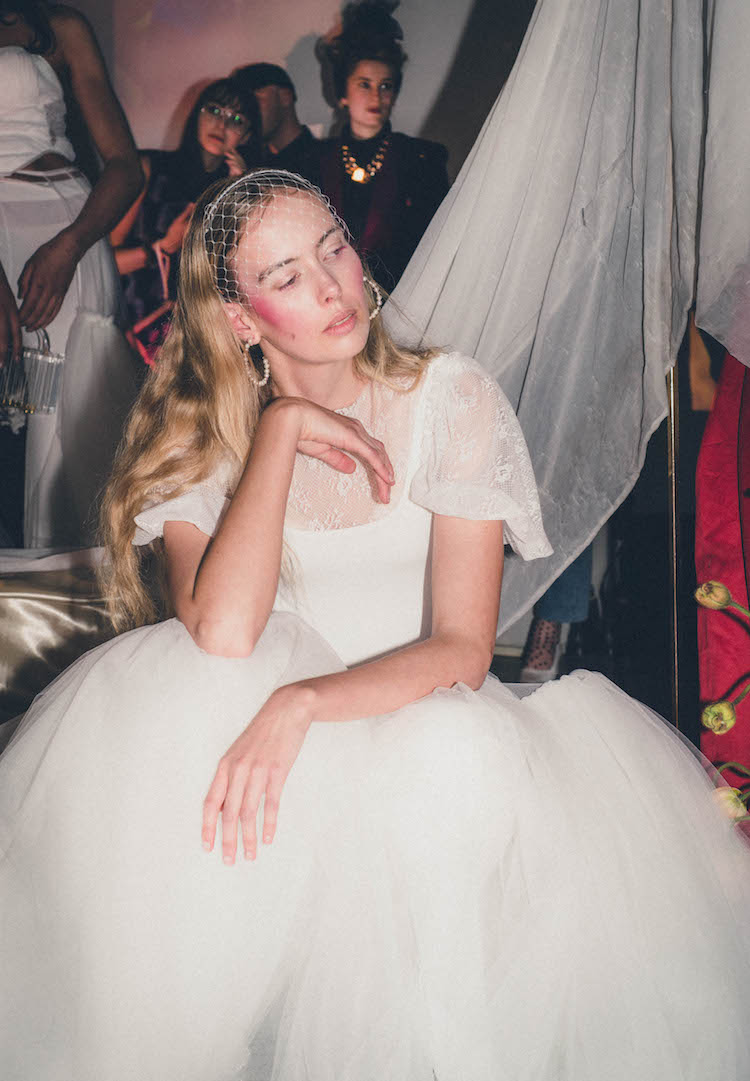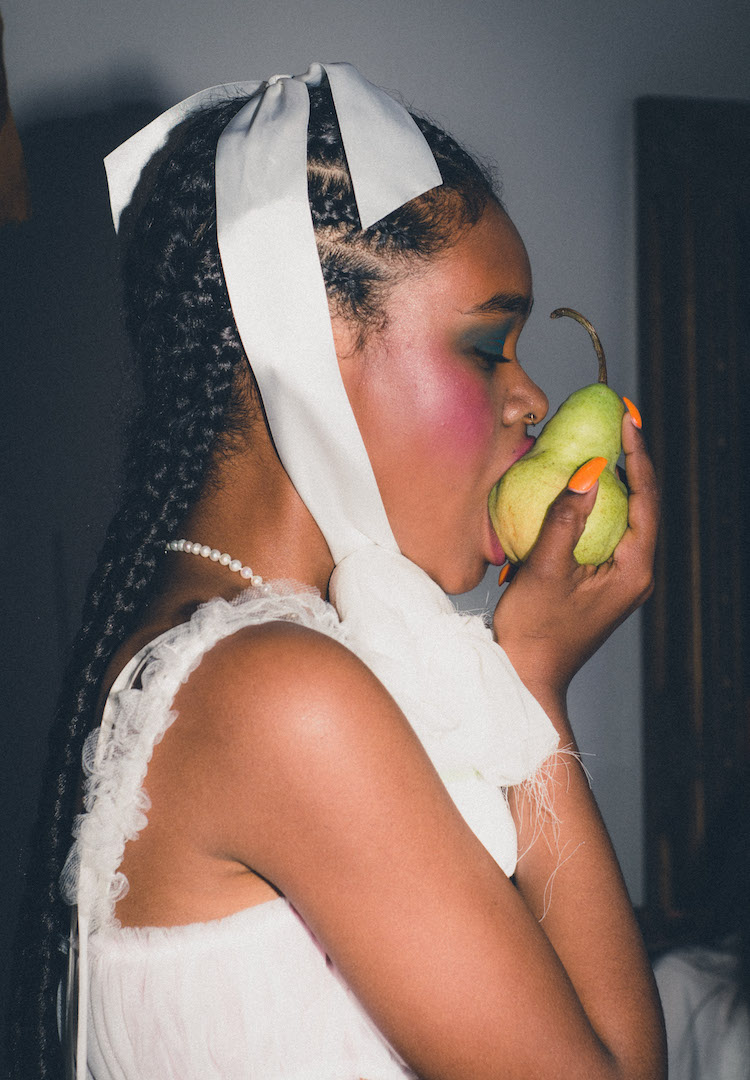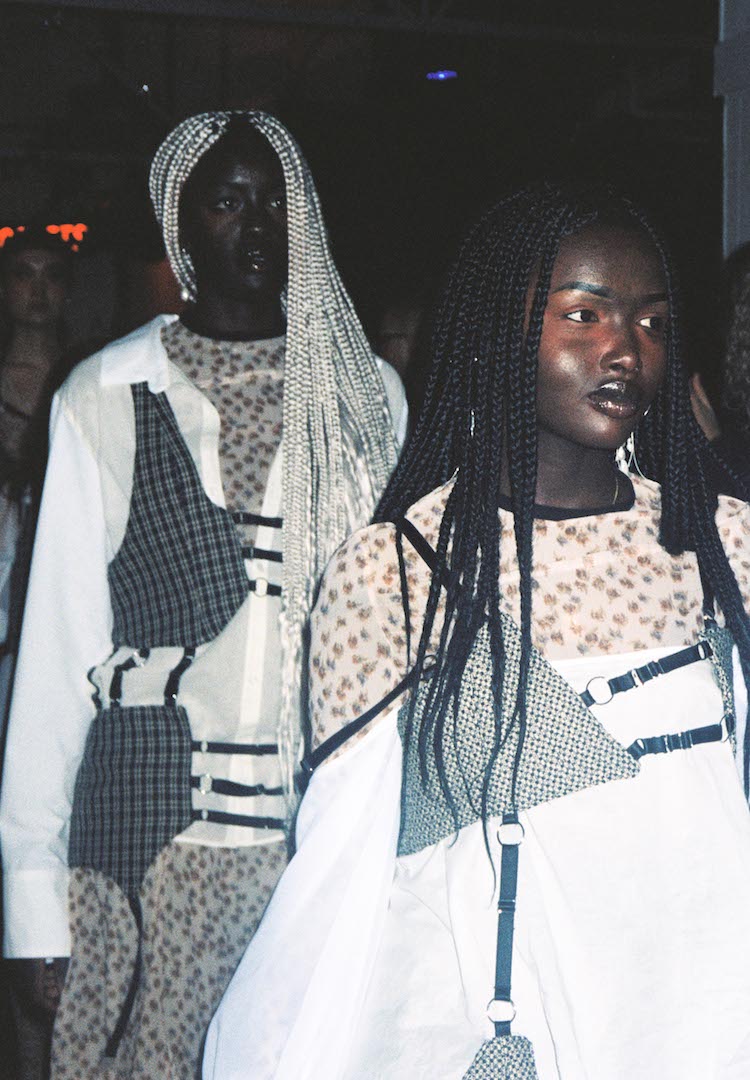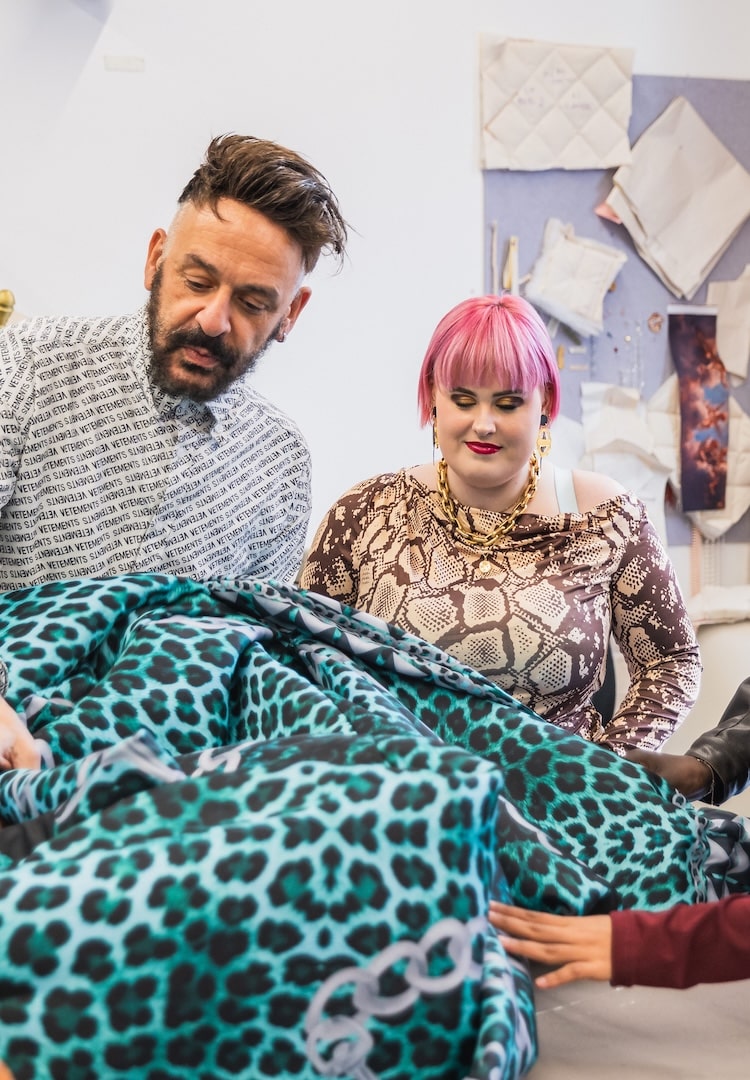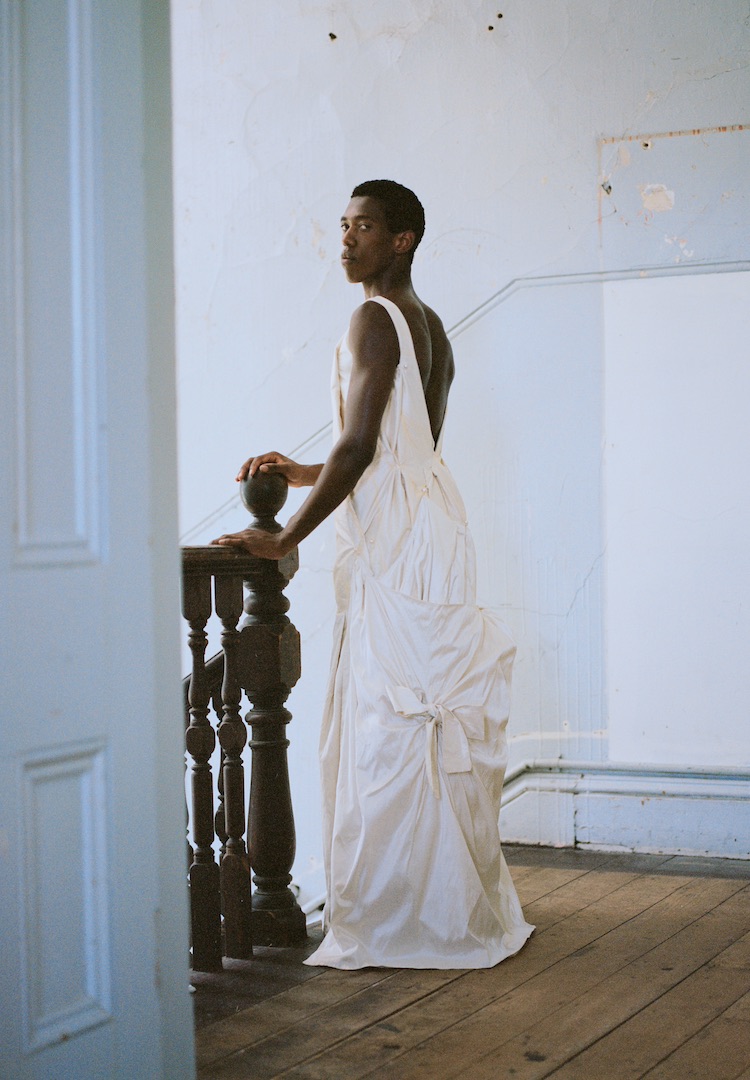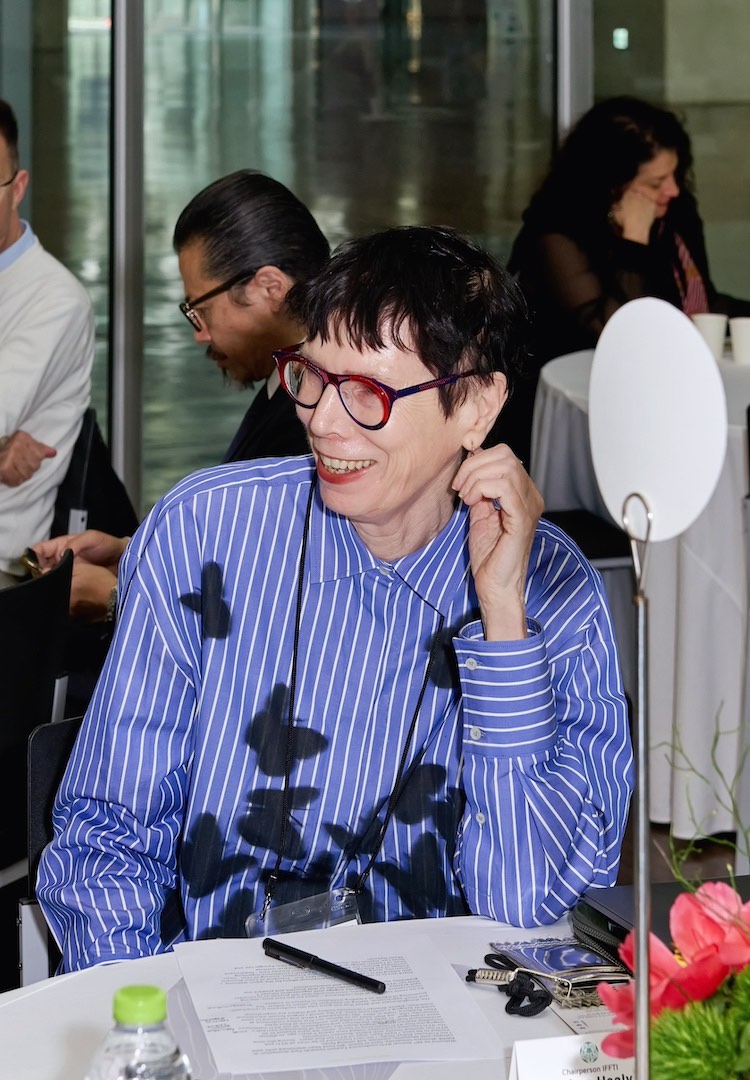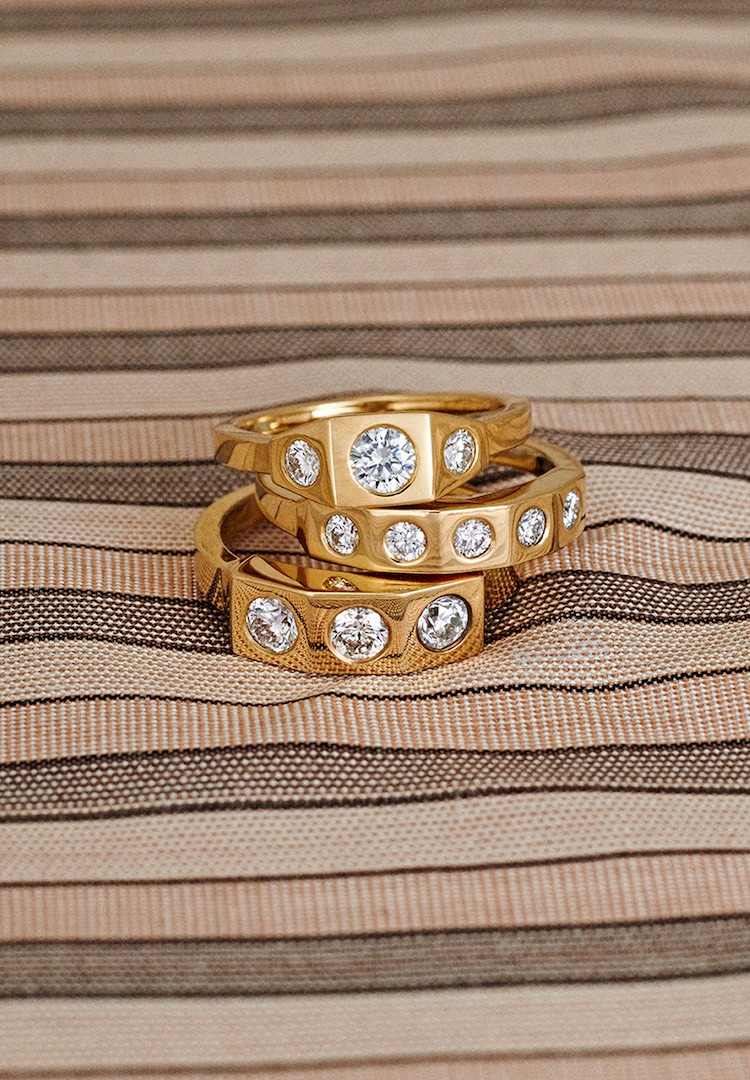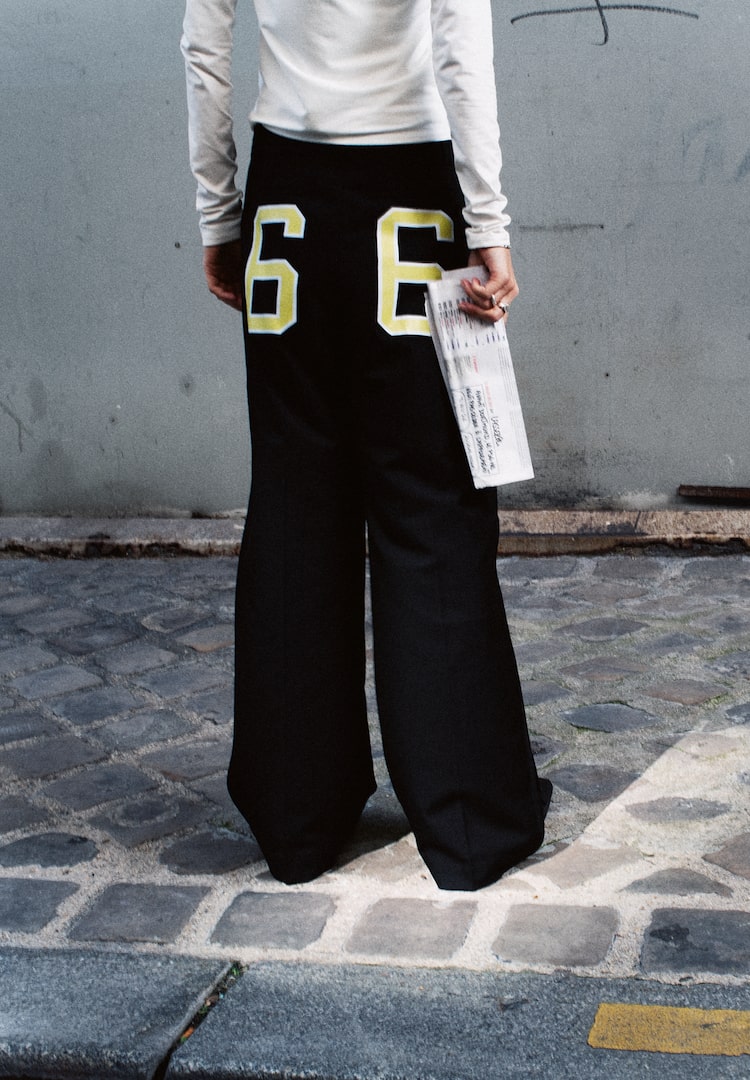A closer look at underground student designer collective, The Leisure Class
IMAGES BY JESS BROHIER, REBECCA MARIAN IRENE AND TIMOTHY TREASURE
Words by Ruby Staley
A new breed of designers.
Not too long ago, boundary-pushing design collective, The Leisure Class, debuted its first salon show.
It’s the collaborative project of five RMIT Bachelor of Fashion Design (Honours) graduates, Katherine Violet Nolan, Peter Sanders, Monica Christy, Georgia Zulian and Eileen Xue Fang. In collaboration with local creatives XXFlos and Stay Soft Studio, The Leisure Class showcase was filled top-to-toe with carefully curated art, design and floristry.
The team transformed Second Story Studio in Collingwood into an experimental space for the evening, which included stringing yards of fabric from the roof and decorating the room with kitsch ornaments. Through the show, The Leisure Class aimed to merge barriers between exhibition and performance by cultivating an installation space where models wandered around crowds. Using light activation and projection art, the models were guided to their positions within the installation.
Rather than attempting to describe the complex and incredibly beautiful designs that were on show for the evening, I’ll pass the mic to the designers to let them articulate their designs and intentions themselves.
Katherine Violet Nolan
@violetnolan_
My honours collection, called Femininity Wearing Me, is about blurring the line between fashion and costume. It deconstructs the traditional femininity seen in eighteenth-century court dresses (otherwise known as the mantua). Focusing on this period allowed me to learn from the way that fashion of the past restricted us, in the hopes to forge a brighter future in fashion. I deconstructed the two key pieces in the mantua (the pannier cage and corset) and disfigured the hourglass shape to deconstruct traditions in feminine clothing.
For this collection I’ve been super interested in Jenny Fax’s emerging collections, I think we play with archetypes and silhouette in a similar way. I think it’s also important to look outside of fashion, too. Suzy Lake’s Imitations of Myself series from 1967 has been a big influence on my perception of femininity and beauty.
The collection is centred around my thesis research, which ultimately communicates that femininity, in our age of fluid gender, should be indefinable and subjective. I think it’s important to create a suite of options for wearers to pull apart and use for their own self-expression. Which is a big reason why there’s a lot of layering in the looks.
It’s been so exciting, since launching everything, to get such positive industry feedback. I’ve found that each way I’ve disseminated the collection has excited people. From the live performance to an installation, and in a publication. I’m working with a lot of stylists at the moment and seeing how others interpret my work. I’m also working on pieces from the collection that have been commissioned.
Eileen Chu
@chu_chu_studiooooo
My graduate collection, Fashion Shower, challenges traditional evening wear and embellishment techniques by replacing them with unconventionality. It consists of a series of looks that combine contrasting fabrics and bright colours with dramatic voluminous silhouettes. I utilised lycra combined with tulle materials for the fabrication, and focused the form in on body-suits with exaggerated tutus to produce a very feminine classic but sporty feeling.
For this collection, I referenced traditional cross-stitching flower patterns, which were a very popular embroidery technique used in the early century. I used this method to create surface decoration on the pieces by using a fusible plastic bead (Perler bead). The plastic motif was also scanned and developed into a repeated print.
I think the general intention of this collection is to challenge traditional evening wear, replacing the norm with unconventional materials and fabrications. In general, it has been well-received by the industry. Many photographers and stylists have contacted me for collaborations. It’s been very interesting to gather other points of view of my work, than my own, seeing it in a new context.
Peter Sanders
@sanders.jpeg
My collection, Extramundane, looks at a combination of corporate wear and lingerie through the manifesto, “Keep your personal and professional life separate”. The starting point was analysing ornamentation of the body through various mutated archetypes – these mostly being shirting or other forms of corporate wear including jackets, slacks, pencil skirts. I also explored the application of corsetry and lingerie quite heavily throughout. In particular, I liked focusing on how to reinvent the corset and completely remove its form-controlling purpose.
A lot of my references were taken from my observations while in the CBD. Typically, I would sit on a busy street and document what people were wearing – taking note of common archetypes and trying to play around with the characters I saw. People-watching unexpectedly became a huge influence on my work, as it let me think of the actions each outfit would have, for example, how would they walk? Were they rushing? How would I show this in their clothes?
I think the general intention of my work is to critique stereotypes in fashion. This project looked more specifically towards the stereotypes of the office environment, and poking fun at the office ‘uniform’. By referencing these characters and garment stereotypes in the office, I was able to create office-themed attire that was also completely inappropriate for a corporate environment.
Overall, my graduate collection has been really well-received. I have had a lot of photographers contact me, as the pieces are quite easy to style with other pieces but are also strong enough to stand their ground – this is something I’m certainly interested in continuing, as it’s fantastic to see my work in new and exciting contexts. I think the most common reception is that my work has the ability to be continued and further researched and explored. I’m really looking forward to unpacking these ideas more thoroughly.
Georgia Julian
@georgiamzulian
My project titled What They Wore explores the ideas of memory, archive, curation, wear, the wardrobe, consumption, bricolage and nostalgia. It’s a refined exploration into emotionally durable design. The project has allowed me to investigate the emotional relationship people have with their clothing, in order to curate a collection that expresses how clothing can be cherished and worn in futurity. The collection tells a romantic story of nostalgic luxury, where presence of memories and emotion can form a greater relationship between clothing and the custodian.
The collection explores five key dress archetypes that live in the wardrobe of memories: the christening dress, the formal dress, the debutante dress, the birthday dress and the wedding dress. My research and work is heavily influenced by my interactions with clothing. As I reflect on my own dressing habits and my own wardrobe, I often look to Simone Rocha, Cecilie Bahnsen, Rodarte, Christopher John Rogers, Emma Craft, Erdem, Matilda Enval, Conner Ives, Joelle Grace, Molly Goddard, Miu Miu and more.
The garments are a representation of an archive of memories, in which the shapes, materials, colours and archetypes communicate the emotion and meaning that is carried with physical garments over their lifetime. They are an expression of how we interact with our wardrobe and keep certain garments because of their meaning and memory. This collection will create a space for critical thinking within fashion design practice and the wear of clothing itself.
The personal reflection on clothing that this collection holds has been very successful, and my concern for fast fashion habits and the desire for durable pieces has been appreciated by others. I felt very honoured to have my collection shown at Melbourne Fashion Week for the Student Runway at Melbourne Town Hall, where my heavily conceptual clothing could be viewed by our local industry and community. With the collection being produced to a high standard of quality, the clothing itself can be valued and will endure, and that is really exciting to me.
Monica Christy
@mon.archive
My graduate collection, Artificial Dream, is a form of suggestion that explores the element of comfort in bridal wear. Challenging the notion of traditional bridal wear, the collection is a response to restrictive Western bridal archetypes, where I deconstructed each layer and redesigned them with comfort in mind. Inspired by the term and feel of leisurewear, the process of making this collection adopts the principle of form follows function where a human-centric design process is applied.
The process of designing the collection revolved around luxury fabrications and draping techniques. The collection is 16 redefined bridal wear components that are made as separate pieces, with endless styling possibilities.
The collection was a reflection of both my experience living in Western and Eastern cultures, where wedding dress archetypes are nothing alike. Influenced by my Indonesian heritage, the wedding dresses were deconstructed into many pieces. The idea of modularity was taken from Indonesian traditional wedding attire called ‘Kebaya’ where an outfit is made of many different components that can be repurposed and restyled for future occasions.
My collection is a critique and suggestion to the bridal industry, that I have found is lacking in terms of style and functionality throughout the years. Combining my research in comfort clothing, this collection is a compilation of what I have learnt in pursuing my degree in Bachelor of Fashion Design (honours) at RMIT. My objectives have become clear in that designing clothing should be a balance of beauty and function. I hope that the approach of prioritising comfort and wearability sparks new ways to design wedding dresses.
It has been a wonderful experience seeing my garments being appreciated by people in the industry after a year-long project of researching and making. Overall it has been well received by other creatives in the industry, and it has been a refreshing experience of seeing my collection from a different point of view.

